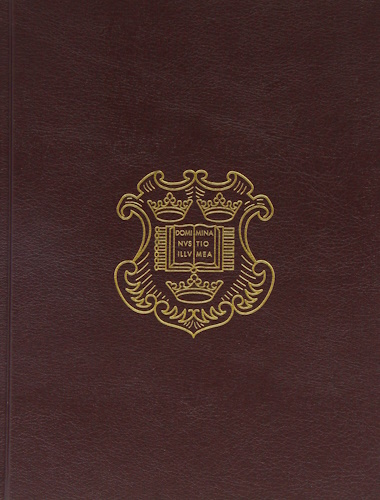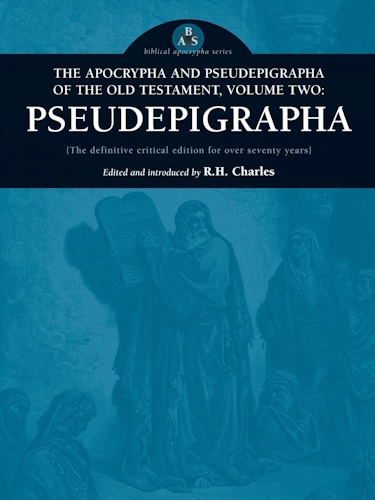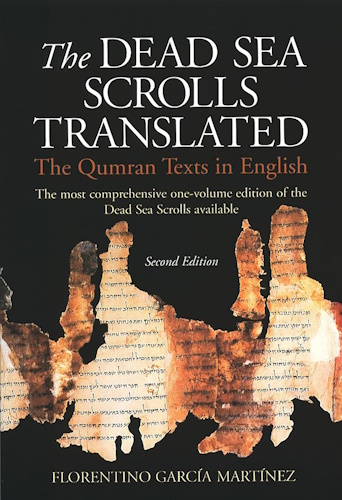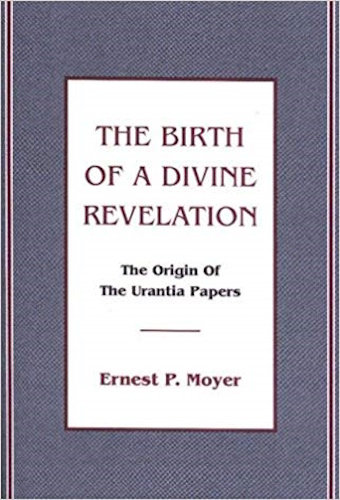














![]()
![]()
WILLIAM S. SADLER
NUMBER OF CONTRIBUTIONS TO SDA PUBLICATIONS
MOSTLY ARTICLES, SOME SERMONS, SOME REPORTS
|
YEAR OF CONTRIBUTION |
ADVENT REVIEW & SABBATH HERALD |
YOUTH INSTRUCTOR |
|
1899 1900 1901 1902 1903 1904 1905 |
14 5 13 -- -- 1 2 |
-- 10 20 -- -- -- 4 |
THE LIFE BOAT
First issue March, 1898
Founded by W. S. Sadler, with introductory editorial.
First editorial Committee: W. S. Sadler, M. E. Olsen, Luther W. Warren, Mina Rumery.
Circulation reported by David Paulson, Co-Editor:
July 1901, approximately 7,000 per month
Jan to May 1902, average of 15,000 per month
June 1902, 25,000/mo.
Feb 1903, 80,000/mo.
Operations moved to Hinsdale, Illinois between March and April, 1905
W. S. Sadler and David Paulson continue to be co-editors through 1902.
Sadler is listed as co-editor into 1905, Associate Editor in 1907.
Sadler was heavy contributor of editorials and articles through 1902.
COLLEGES ATTENDED BY WILLIAM S. SADLER
INFORMATION ON BATTLE CREEK COLLEGE
Notes from summary account provided by Trustees of Andrews University in 1974, one hundredth anniversary of Battle Creek College.
Battle Creek College was precursor to Andrews University, denominational school now located in Berrien Springs, Michigan.
First started as a select private school in 1868 by G. H. Bell, who later became an instructor on the staff.
School was adopted as a General Conference project in May, 1872.
Enrollment in 1873 was more than 100.
Legally incorporated in March, 1874, under direction of Sidney Brownsberger.
1877-1878 school year enrollment was 413, but included many part time students and courses of study for missionary training, not merely academic studies.
Due to lack of boarding and confused policy academic college enrollment dropped to 43 in 1879.
In 1880 enrollment was 490 (for all departments) with instruction given by G. H. Bell, Uriah Smith, and J. H. Kellogg.
During this early period the College was not Bible oriented, Bible instruction being limited to voluntary attendance at a series of daily lectures by Uriah Smith.
College continued to suffer because of lack of residence facilities; "most students boarded in private homes, some banded together into clubs for group feeding, and many boarded themselves." A new three-story boarding hall was occupied in 1883 and a second dormitory with improved dining facilities was built in 1886. William Prescott, President, who succeeded Wolcott Littlejohn in 1885, set a pattern of etiquette with his wife when they dined regularly with the students.
"The early 1890's, (the years when Sadler was attending the college), were years of deepening spiritual emphasis at the college. By 1894-1895 all students were required to take at last one year of Bible, and all classes were given a more spiritual tone."
A bulletin for 1892-1893 shows 30 students in the college department in 1890, 19 in 1891. A schedule of instruction for the college has four years, with both a Classical and a Scientific curriculum. Courses included Latin, Greek, German, mathematics, (including calculus), astronomy, history, logic, literature, advanced physics, mineralogy, mental science, moral science, and political science. Many text books and reference books are listed.
In 1894 drastic curricular changes were made under Edward A. Sutherland, to remove the worldly academic emphasis and to replace it with Bible oriented classes.
A survey made in 1897 showed that 38 per cent of all ordained ministers in the SDA had received some schooling at Battle Creek college.
By 1899 SDA had 130 church schools, with two-thirds of their teachers having studied at Battle Creek. In 1901 the school moved to Berrien Springs.
INFORMATION ON AMERICAN MEDICAL MISSIONARY COLLEGE
The American Medical Missionary College was formally organized as the Medical Missionary Training School in Battle Creek in 1883, under the auspices of the Battle Creek Sanitarium. Emphasis was on practical training for medical services of various kinds. An 1898 school Announcement makes the following opening remark:
"This is an institution for the training of young men and women to engage in various lines of medical and other philanthropic works on a gospel and Christian basis, under the direction of regularly organized missionary boards."
"The first systematic educational work began in 1877, in the organization of a School of Hygiene, which a few years later developed into a Nurses Training School, the organization of which was complete in 1884."
This effort continued to add courses from year to year until it could encompass a formal program leading to the licensing of Medical Doctors. The Battle Creek operation showed more than forty students in the Medical course in 1896-97, more than seventy in 1897-98, and approximately 100 in 1898-99. Twenty-four were graduated in 1899.
The 1898-99 Announcement includes the following auxiliary courses of study:
Missionary Nurses Training School 2 years
Health Teachers' Course 1 year
Missionary Mother's Course 2 years
School of Scientific Cookery 6 months
Other assorted courses of reduced length.
A Chicago division was incorporated on July 3, 1895.
A school Announcement for the Chicago division for 1898-99 lists a faculty of 14 MD's including J. H. Kellogg and David Paulson, long associate of Sadler. An opening statement makes the following remark:
"This institution, while separately incorporated, is nevertheless maintained by the Battle Creek Sanitarium, and is conducted in harmony with the principles of that institution."
The course covered four years of forty weeks each.
A school Announcement for 1904-05, a year in which Sadler and Lean attended, included the following courses:
First Year: General, Organic and Physiological Chemistry, Physiology, Anatomy, Biology, Histology, and Embryology.
Second Year: Psychology, Medicine and Pathology, Physiological Therapeutics, Dietetics, "Materia Medica" and Toxicology.
Third Year: Theory and Practice of Medicine, Pathology, Surgical Anatomy, Gynecology, Obstetrics, Eye and Ear, and Physical Diagnosis.
Fourth Year: In addition to senior levels of above courses, included were Sanitary Science and Nervous and Mental diseases.
In the 1904-05 and 1905-06 Announcements William S. and Lena Sadler were listed as Juniors. In the 1906-07 Announcement they were listed as Seniors.
In a letter to Willie White, Sadler remarks that he found the academic work at AMMC more arduous than at Cooper College in San Francisco.
After J. H. Kellogg and 100 medical doctors were disfellowshipped in 1907 the college was dropped from the denominational Yearbook. The college was closed in 1910.
![]()
![]()
Disclaimer:
Some material presented will contain links, quotes, ideologies, etc., the contents of which should be understood to first, in their whole, reflect the views or opinions of their editors, and second, are used in my personal research as "fair use" sources only, and not espousement one way or the other. Researching for 'truth' leads one all over the place...a piece here, a piece there. As a researcher, I hunt, gather and disassemble resources, trying to put all the pieces into a coherent and logical whole. I encourage you to do the same. And please remember, these pages are only my effort to collect all the pieces I can find and see if they properly fit into the 'reality aggregate'.
Personal Position:
I've come to realize that 'truth' boils down to what we 'believe' the facts we've gathered point to. We only 'know' what we've 'experienced' firsthand. Everything else - what we read, what we watch, what we hear - is what someone else's gathered facts point to and 'they' 'believe' is 'truth', so that 'truth' seems to change in direct proportion to newly gathered facts divided by applied plausibility. Though I believe there is 'truth', until someone representing the celestial realm visibly appears and presents the heavenly records of Facts And Lies In The Order They Happened, I can't know for sure exactly what "the whole truth' on any given subject is, and what applies to me applies to everyone. Until then I'll continue to ask, "what does The Urantia Book say on the subject?"
~Gail Bird Allen
![]()
![]()














-
Urantia Book, 44:0.11 - The Celestial Artisans
Never in your long ascendancy will you lose the power to recognize your associates of former existences. Always, as you ascend inward in the scale of life, will you retain the ability to recognize and fraternize with the fellow beings of your previous and lower levels of experience. Each new translation or resurrection will add one more group of spirit beings to your vision range without in the least depriving you of the ability to recognize your friends and fellows of former estates.
-
Princess Bride 1987 Wallace Shawn (Vizzini) and Mandy Patinkin (Inigo Montoya)
Vizzini: HE DIDN'T FALL? INCONCEIVABLE.
Inigo Montoya: You keep using that word. I do not think it means what you think it means. -
Urantia Book, 117:4.14 - The Finite God
And here is mystery: The more closely man approaches God through love, the greater the reality -- actuality -- of that man. The more man withdraws from God, the more nearly he approaches nonreality -- cessation of existence. When man consecrates his will to the doing of the Father's will, when man gives God all that he has, then does God make that man more than he is.
-
Urantia Book, 167:7.4 - The Talk About Angels
"And do you not remember that I said to you once before that, if you had your spiritual eyes anointed, you would then see the heavens opened and behold the angels of God ascending and descending? It is by the ministry of the angels that one world may be kept in touch with other worlds, for have I not repeatedly told you that I have other sheep not of this fold?"
-
Urantia Book, Foreword - 0:12.12 - The Trinities
But we know that there dwells within the human mind a fragment of God, and that there sojourns with the human soul the Spirit of Truth; and we further know that these spirit forces conspire to enable material man to grasp the reality of spiritual values and to comprehend the philosophy of universe meanings. But even more certainly we know that these spirits of the Divine Presence are able to assist man in the spiritual appropriation of all truth contributory to the enhancement of the ever-progressing reality of personal religious experience—God-consciousness.
-
Urantia Book, 1:4.3 - The Mystery Of God
When you are through down here, when your course has been run in temporary form on earth, when your trial trip in the flesh is finished, when the dust that composes the mortal tabernacle "returns to the earth whence it came"; then, it is revealed, the indwelling "Spirit shall return to God who gave it." There sojourns within each moral being of this planet a fragment of God, a part and parcel of divinity. It is not yet yours by right of possession, but it is designedly intended to be one with you if you survive the mortal existence.
-
Urantia Book, 1:4.1 - The Mystery Of God
And the greatest of all the unfathomable mysteries of God is the phenomenon of the divine indwelling of mortal minds. The manner in which the Universal Father sojourns with the creatures of time is the most profound of all universe mysteries; the divine presence in the mind of man is the mystery of mysteries.
-
Urantia Book, 1:4.6 - The Mystery Of God
To every spirit being and to every mortal creature in every sphere and on every world of the universe of universes, the Universal Father reveals all of his gracious and divine self that can be discerned or comprehended by such spirit beings and by such mortal creatures. God is no respecter of persons, either spiritual or material. The divine presence which any child of the universe enjoys at any given moment is limited only by the capacity of such a creature to receive and to discern the spirit actualities of the supermaterial world.
-
Urantia Book, 11:0.1 - The Eternal Isle Of Paradise
Paradise is the eternal center of the universe of universes and the abiding place of the Universal Father, the Eternal Son, the Infinite Spirit, and their divine co-ordinates and associates. This central Isle is the most gigantic organized body of cosmic reality in all the master universe. Paradise is a material sphere as well as a spiritual abode. All of the intelligent creation of the Universal Father is domiciled on material abodes; hence must the absolute controlling center also be material, literal. And again it should be reiterated that spirit things and spiritual beings are real.
-
Urantia Book, 50:6.4 - Planetary Culture
Culture presupposes quality of mind; culture cannot be enhanced unless mind is elevated. Superior intellect will seek a noble culture and find some way to attain such a goal. Inferior minds will spurn the highest culture even when presented to them ready-made.
-
Urantia Book, 54:1.6 - True And False Liberty
True liberty is the associate of genuine self-respect; false liberty is the consort of self-admiration. True liberty is the fruit of self-control; false liberty, the assumption of self-assertion. Self-control leads to altruistic service; self-admiration tends towards the exploitation of others for the selfish aggrandizement of such a mistaken individual as is willing to sacrifice righteous attainment for the sake of possessing unjust power over his fellow beings.
-
Urantia Book, 54:1.9 - True And False Liberty
How dare the self-willed creature encroach upon the rights of his fellows in the name of personal liberty when the Supreme Rulers of the universe stand back in merciful respect for these prerogatives of will and potentials of personality! No being, in the exercise of his supposed personal liberty, has a right to deprive any other being of those privileges of existence conferred by the Creators and duly respected by all their loyal associates, subordinates, and subjects.
-
Urantia Book, 54:1.8 - True And False Liberty
There is no error greater than that species of self-deception which leads intelligent beings to crave the exercise of power over other beings for the purpose of depriving these persons of their natural liberties. The golden rule of human fairness cries out against all such fraud, unfairness, selfishness, and unrighteousness.







